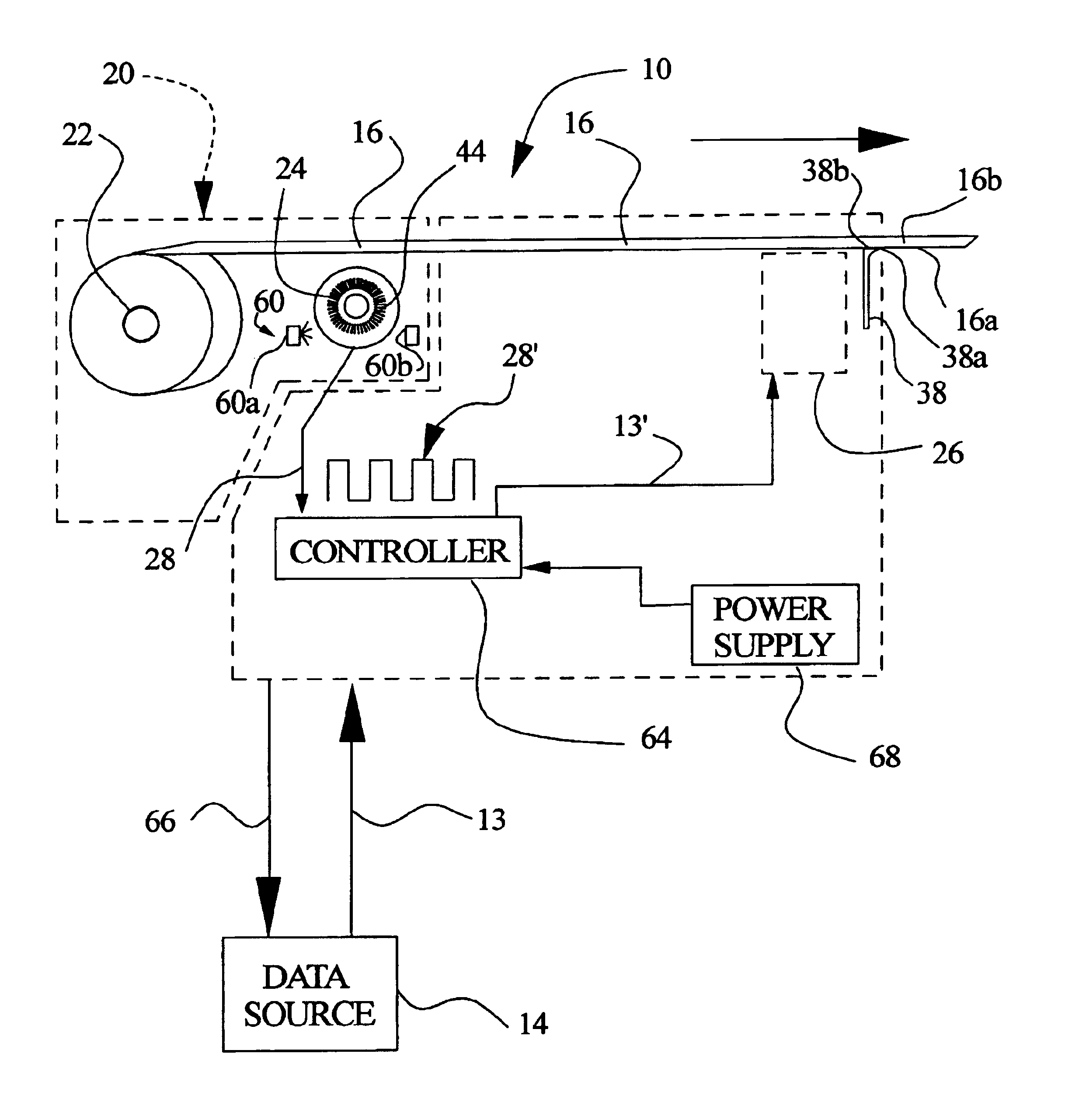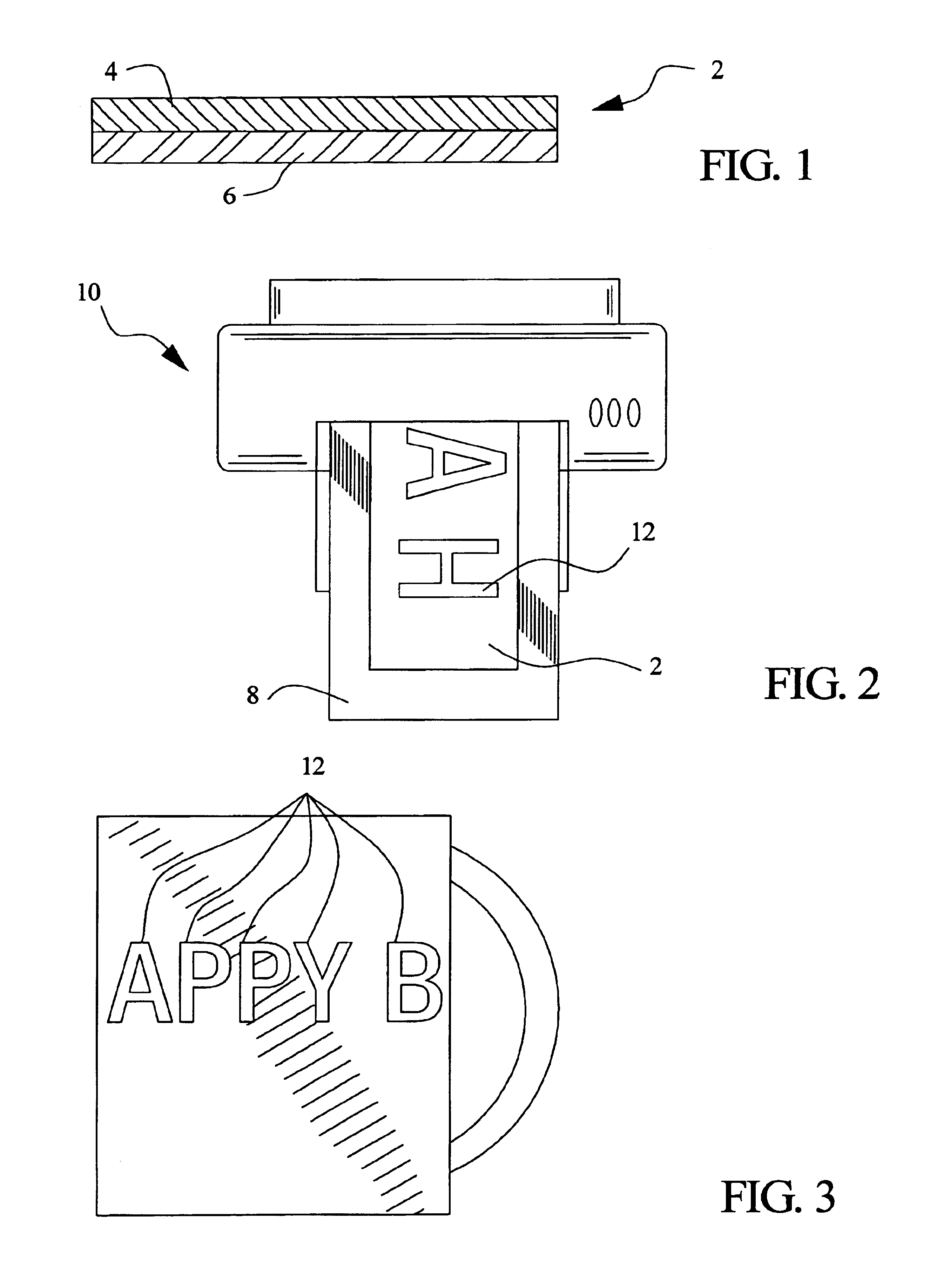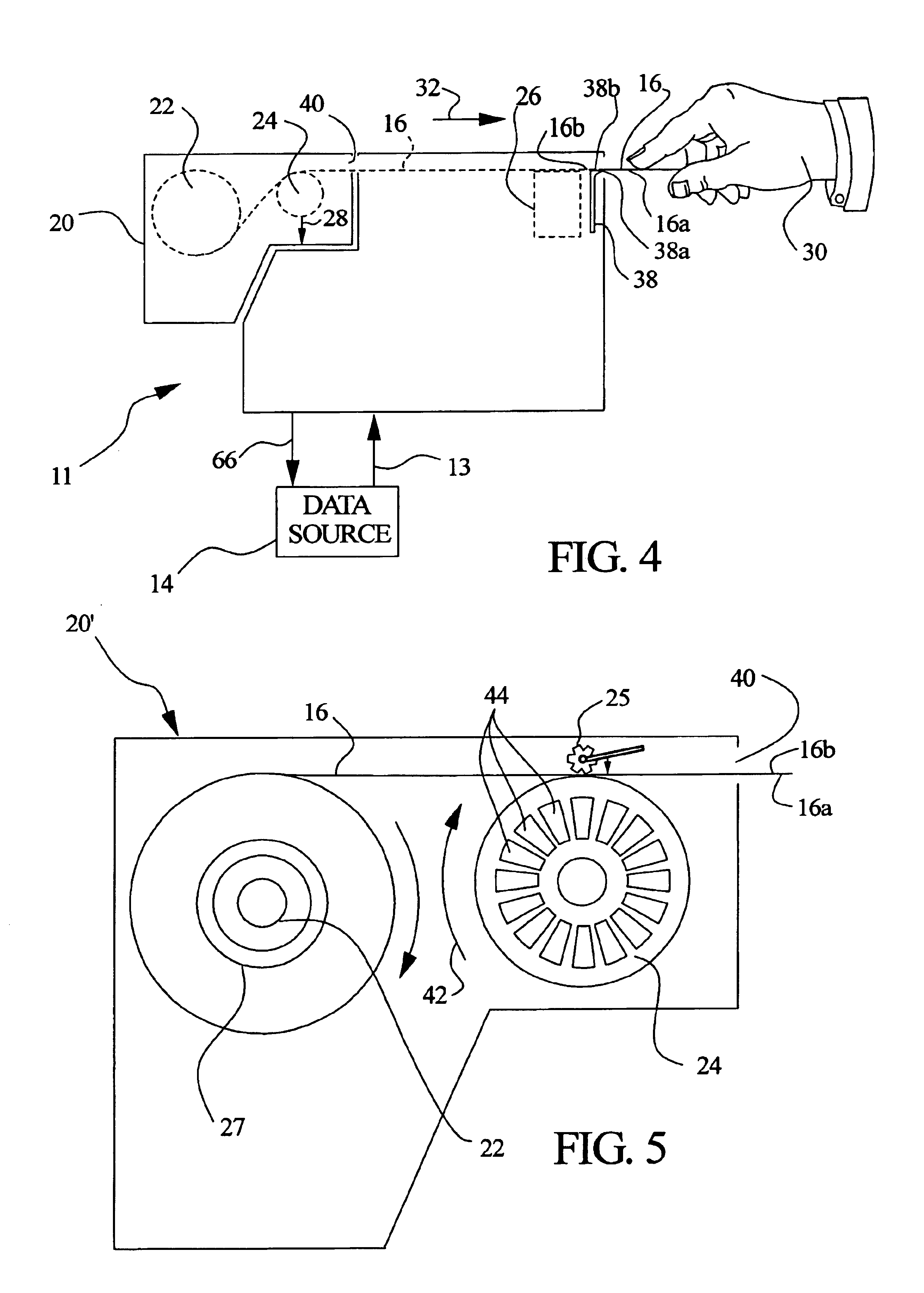Label-making inkjet printer
a label-making inkjet printer and label-making technology, applied in the field of printing devices, can solve the problems of limited application of labels in other more creative and personal applications, shortening the range of label-making methods and label-media, and reducing the potential of labels
- Summary
- Abstract
- Description
- Claims
- Application Information
AI Technical Summary
Benefits of technology
Problems solved by technology
Method used
Image
Examples
Embodiment Construction
The present invention proposes application of print imaging on an adhesive surface of a plastic receptor media Generally, the image is printed onto the adhesive surface using inkjet printer technology. After the image is printed, the receptor media is applied to an item, thereby “labeling” the item with the print imaging. Since the image is printed onto the adhesive surface, it is protected from moisture and scuffing after it is applied to the item.
The present invention will be illustrated in several variations of media, printing apparatus, and methods of use. Generally, the present invention allows label-making on strip-form media In one embodiment, media mounts to a backing sheet and passes through a conventional inkjet printer. In other embodiments, however, the strip-form media feeds from a reel. The present invention may be embodied in printing devices generally taking the form of a tape dispenser, but applying print imaging to the adhesive side of the tape. As a result, a vari...
PUM
 Login to View More
Login to View More Abstract
Description
Claims
Application Information
 Login to View More
Login to View More - R&D
- Intellectual Property
- Life Sciences
- Materials
- Tech Scout
- Unparalleled Data Quality
- Higher Quality Content
- 60% Fewer Hallucinations
Browse by: Latest US Patents, China's latest patents, Technical Efficacy Thesaurus, Application Domain, Technology Topic, Popular Technical Reports.
© 2025 PatSnap. All rights reserved.Legal|Privacy policy|Modern Slavery Act Transparency Statement|Sitemap|About US| Contact US: help@patsnap.com



